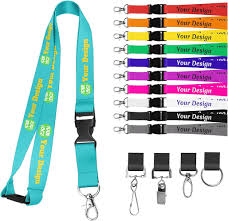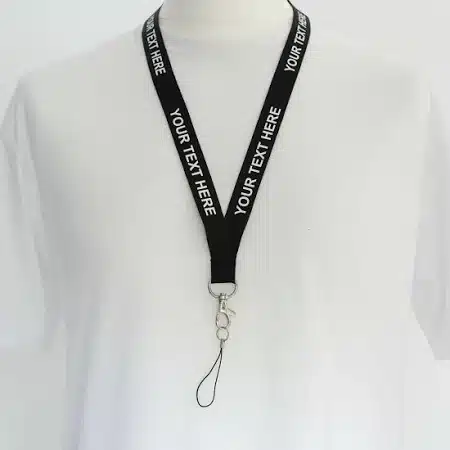Table of Contents
In daily life, children’s lanyards are loved by parents and children for their convenience and decorativeness. Whether it is a cartoon key lanyard hanging around the neck or a water cup lanyard on the wrist, it has become a little helper for children to carry items with them. However, seemingly ordinary children’s lanyards may hide huge safety hazards. In recent years, safety accidents caused by children’s lanyards are common. How to escort children’s safety through scientific and reasonable safety design has become the focus of common concern of parents and manufacturers. This article will explore in depth the key points of safety design of children’s lanyards to help parents choose safe and reliable children’s lanyards.

Safety hazards of children’s lanyards
The potential dangers of children’s lanyards should not be underestimated. Its main safety hazards are reflected in many aspects. First, the risk of entanglement is the most common problem. Children are naturally active. When playing and running, once the lanyard on their neck is hooked by objects such as tables, chairs, slides, etc., it is easy to cause suffocation. Relevant studies have shown that in a short period of time, a pulling force of only about 10 kilograms may cause serious damage to children’s necks, or even endanger their lives. Secondly, the detachment of small parts on the lanyard may also cause the risk of accidental ingestion.
If some decorative beads and pendants are not firmly fixed, they are likely to be put into the mouth after being pulled down by children, causing serious consequences such as tracheal obstruction. In addition, the materials used in some children’s lanyards may have chemical safety hazards, such as harmful substances such as formaldehyde and heavy metals. Long-term contact will cause chronic damage to children’s health.
Standards and specifications for the safe design of children’s lanyards
In order to ensure the safety of children’s lanyards, a series of strict standards and specifications have been formulated both at home and abroad. In China, according to the GB 6675 “Toy Safety” series of standards, there are clear requirements for the length, strength, and firmness of small parts of children’s lanyards.
For example, the free length of children’s lanyards worn around the neck should generally not exceed 22 cm, and they should be able to automatically disconnect under a certain tension to avoid the risk of entanglement and suffocation. Internationally, the US Consumer Product Safety Commission (CPSC) and the EU Toy Safety Directive (EN 71) have also made detailed provisions for the safety design of children’s lanyards. These standards not only provide design basis for manufacturers, but also provide important reference for parents to purchase children’s lanyards.

Key elements of children’s lanyard safety design
(I) Material selection
The material of children’s lanyards is directly related to the health and safety of children. First of all, non-toxic, harmless, environmentally friendly and safe materials should be selected. Natural fiber materials such as pure cotton and linen are not only soft and comfortable, will not irritate children’s delicate skin, but also have less chemical residue and high safety factor.
In addition, silicone material has gradually become a popular choice for children’s lanyards. It has the advantages of wear resistance, easy cleaning, non-toxic and odorless, and is suitable for making various types of water cup lanyards, tableware lanyards, etc. When choosing materials, parents must check the product label to confirm whether it has passed the relevant safety tests to avoid purchasing lanyards containing harmful substances.
(II) Length control
Reasonable control of the length of children’s lanyards is the key to reducing the risk of entanglement. In addition to following the restrictions on the length of neck lanyards in the above standards, wrist lanyards, backpack lanyards, etc. should also be appropriately adjusted according to the age and usage scenarios of the child.
For example, the wrist lanyard used by younger children should not be too long to avoid being hooked by objects during activities; backpack lanyards should ensure that they will not drag on the ground when the child is walking or running to prevent tripping or entanglement. When designing, manufacturers can adopt an adjustable length structure to facilitate parents to adjust according to the actual situation of their children, thereby improving the applicability and safety of the lanyard.
(III) Safety buckle design
The safety buckle is an important part of the safety design of children’s lanyards. At present, the common safety buckles on the market are easy to disassemble and automatically break. The easy-to-detach safety buckle allows parents to remove the lanyard at any time to avoid unnecessary dangers; the automatic break safety buckle can quickly break when the lanyard is subjected to a certain tension to prevent entanglement and suffocation.
For example, some children’s lanyards with magnetic safety buckles will automatically separate when they encounter external forces, which not only ensures the normal use of the lanyard, but also ensures the safety of children in emergency situations. When designing safety buckles, manufacturers must ensure their firmness and reliability, and also consider the convenience of operation to facilitate parents and children to use.
(IV) Fixing of small parts
In order to prevent the risk of accidental ingestion caused by the falling of small parts, decorative pendants, beads, etc. on children’s lanyards must be firmly fixed. Manufacturers can use ultrasonic welding, strong glue bonding and other processes to ensure that small parts are tightly connected to the lanyard. At the same time, it is necessary to regularly test the small parts of the children’s lanyards produced to ensure that the small parts will not fall off under normal use and certain external forces. When parents choose children’s lanyards, they can also gently pull the small parts with their hands to check their firmness and avoid purchasing products with safety hazards.
(V) Edge treatment
The edge treatment of children’s lanyards should also not be ignored. Rough edges may scratch children’s skin, especially in the parts where the lanyard frequently contacts the child’s body. Therefore, during the production process, manufacturers should finely polish and wrap the edges of the lanyards to make them smooth and flat. For example, some children’s lanyards use a wrapping design, which not only increases the beauty of the lanyard, but also effectively prevents the edges from causing damage to the child’s skin.
IV. How to choose a safe children’s lanyard
(I) Check the product label
When parents choose children’s lanyards, they should first check the product label. Regular children’s lanyard products should be marked with information such as the manufacturer, material composition, applicable age, and implementation standards. By checking the product label, parents can understand whether the lanyard meets the relevant safety standards and whether it is suitable for their children’s age and usage needs. If the product identification information is incomplete or unclear, it is recommended to purchase with caution.
(II) Check product quality
In addition to checking the product identification, you should also carefully check the quality of the children’s lanyard. You can touch the material of the lanyard with your hands to feel its softness and comfort; observe whether the stitching of the lanyard is even and firm, whether there is any loose thread or seam; pull the safety buckle to test its firmness and ease of disassembly; check whether the small parts are firmly fixed. Through these simple inspection methods, you can preliminarily judge the quality of the children’s lanyard.
(III) Choose a well-known brand
Among the many children’s lanyard products, choosing products from well-known brands is often more secure. Well-known brands usually have stricter production standards and quality control systems, and the children’s lanyards they produce are more trustworthy in terms of safety design and product quality. Although the prices of products from well-known brands may be relatively high, for the safety of their children, parents should not pursue low prices too much and ignore the safety of the products.
(IV) Refer to user reviews
In the Internet age, referring to other users’ reviews is also an important method for purchasing children’s lanyards. Parents can check other consumers’ reviews and feedback on products through e-commerce platforms, social media and other channels. Understand whether the product has safety issues and whether the quality is reliable during actual use, so as to provide reference for your own purchase.

Correct use and maintenance of children’s lanyards
Even if you choose a safe children’s lanyard, correct use and maintenance are equally important. Parents should teach their children to use children’s lanyards correctly, and tell them to remove the neck lanyard as much as possible during play, exercise and other activities to avoid accidents. At the same time, regularly check the use of children’s lanyards to check whether the safety buckle is normal, whether the small parts are loose, and whether the lanyard is worn. If the lanyard is found to have safety hazards, it should be replaced in time to ensure the safety of the child’s use.
In addition, after using the children’s lanyard for a period of time, it should be cleaned and maintained to keep the lanyard clean and hygienic to prevent bacteria from growing and affecting the child’s health.
The safety design of children’s lanyards is related to the life safety and physical health of children. Both manufacturers and parents should attach great importance to it. Manufacturers must strictly follow relevant standards and specifications, carry out scientific and reasonable safety design from multiple aspects such as material selection, length control, and safety buckle design, and produce safe and reliable children’s lanyard products; parents must master the knowledge of purchasing and using children’s lanyards, select safe children’s lanyards for their children, and teach their children how to use and maintain them correctly.
Only with the joint efforts of both parties can children’s lanyards truly become a little helper to protect children’s safety while providing convenience for children. Let us pay attention to the safety design of children’s lanyards and create a safe and healthy growth environment for children.
This article revolves around the safety design of children’s lanyards and covers many aspects. If you think some parts need to be supplemented or modified, or if you want to adjust the keyword density, please feel free to tell me.